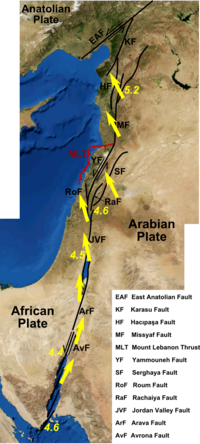
Photo from wikipedia
The magnetic signature of subsurface geology is crucial for understanding the crustal structure and its composition. Marine and aeromagnetic surveys deliver low-resolution regional coverage with a high cost. Ground surveys… Click to show full abstract
The magnetic signature of subsurface geology is crucial for understanding the crustal structure and its composition. Marine and aeromagnetic surveys deliver low-resolution regional coverage with a high cost. Ground surveys by walking are much cheaper, yet their coverage is limited to site surveys. The quantitative integration of varying datasets is one of the main challenges of the magnetic method. These datasets differ in the type of acquisition equipment used, geographical scale, elevation of measurement stations and their spacing, physical limitations in the field, borders, and different datum. Here we tackle these challenges through improving the ground magnetic coverage extent by bike-mag measurements, and improving and applying the “equivalent source technique” for integration of all available data sources, upon their high variability. We constructed detailed magnetic anomaly maps for the area hosting the Dead Sea transform (DST) continental plate boundary which intersects the Harrat Ash-Shaam volcanic field. Despite the complex conditions, our new magnetic maps (intensity and reduced-to-pole, RTP) show a remarkable agreement with independent geological, geophysical, geochronological and geomorphological evidence. The new magnetic results suggest that the magnetic anomalies define subsurface basaltic bodies, including an E–W elongated body that crosses the DST within the Kinneret Basin, and a volcanic eruption center within the Yarmouk River gorge. In addition, the N-trending DST strand bounding the western Kinarot Basin crosses the Kinneret Basin diagonally (SW–NE). The consistent and reliable results allow us to recommend our methods for suitable regions worldwide.
Journal Title: Pure and Applied Geophysics
Year Published: 2019
Link to full text (if available)
Share on Social Media: Sign Up to like & get
recommendations!